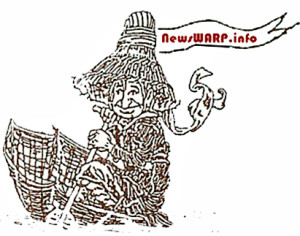|
Marc-Antoine Kaeser, sent these three papers (in French–we publish in all languages) on his work and an update will be presented at WARP30, June 28–July 2nd, 2016 in Bradford, England WARP30 . Hope you can attend.
|
|
Marc-Antoine Kaeser, sent these three papers (in French–we publish in all languages) on his work and an update will be presented at WARP30, June 28–July 2nd, 2016 in Bradford, England WARP30 . Hope you can attend.
|
By Nancy A. Greene, David C. McGee and Roderick J. Heitzmann
In March of 2010 we announced in NewsWARP the important work on some well preserved and sophisticated wet site fish trap complexes on eastern Vancouver Island, Comox Harbour, Canada. The Canadian researchers have just published a brilliant report on this work in the Canadian Journal of Archaeology, and the CJA Editor, Gary Coupland, gave us permission to make this paper available to the international wet site/wetland archaeologist audience of NewsWARP. Below is the abstract and the paper is linked at the end. Thanks to CJA and the researchers for sharing this great synthesis for all.
Abstract. Results of highly detailed mapping and radiocarbon dating at a vast and largely unknown intertidal fish trap complex indicate a large-scale, technologically sophisticated Aboriginal trap fishery operated at Comox Harbour, Vancouver Island, British Columbia between about 1,300 and 100 years ago. Two temporally and morphologically distinct trap types were utilized, and the shift from the Winged Heart trap type to the Winged Chevron trap type ca. 700 B.P. appears abrupt and closely coincident with Little Ice Age climatic conditions and increased importance of salmon at Aboriginal village sites on west coast Vancouver Island, at Haida Gwaii (Queen Charlotte Islands) and south coast Alaska.
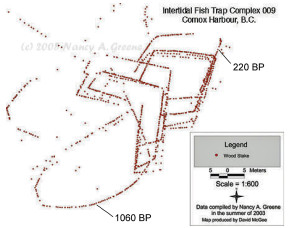 Drawing comparisons from closely analogous historical and contemporary North American large-scale traps designed with knowledge of fish behaviour, the Winged Heart and Winged Chevron traps were likely designed to mass harvest herring and salmon, respectively. This study contributes to the wider consideration of marine adaptation on the Pacific Northwest Coast.
Drawing comparisons from closely analogous historical and contemporary North American large-scale traps designed with knowledge of fish behaviour, the Winged Heart and Winged Chevron traps were likely designed to mass harvest herring and salmon, respectively. This study contributes to the wider consideration of marine adaptation on the Pacific Northwest Coast.
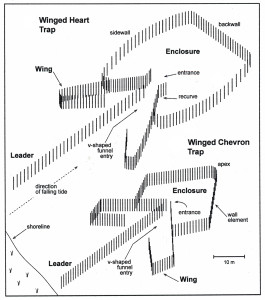 Schematic diagrams of the Winged Heart trap and the Winged Chevron trap types. Each type is a composite built with three components: leader, bilaterally positioned wings and enclosure, arranged along a central line.
Schematic diagrams of the Winged Heart trap and the Winged Chevron trap types. Each type is a composite built with three components: leader, bilaterally positioned wings and enclosure, arranged along a central line.
Please find the full publication of this work at:Â Comox Harbour Fish Trap Complex, British Columbia, Canada
NEW BOOK:Â Ozette: Excavating a Makah Whaling Village
By Ruth Kirk, Author
The first comprehensive book on the history and research at the Ozette Village site investigations is now released. Author Ruth Kirk does an excellent job synthesizing all the details of the field work, discovery of preserved wet site houses under a mudslide, developing the fieldwork strategies and logistics for year-round operations and the considerable research accomplished concerning this massive Northwest Coast of North America wet site undertaking. A must read to understand the work done on this major wet site.
Here are some of the comments about this book:
UW Press: Ruth Kirk was present, documenting the archaeological work from its beginning, and her firsthand knowledge of the people and efforts involved enrich her compelling story of discovery, fieldwork, and deepen our understanding of Makah cultural heritage.
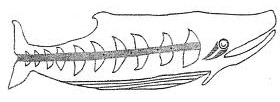 Anything Ruth Kirk writes I will devoutly read, and to have her paired with the dramatic story of the Ozette dig is a decided pleasure. No writer is more qualified, nor more dedicated, to the telling of this enticing archeological tale. – Ivan Doig, author of Winter Brothers
Anything Ruth Kirk writes I will devoutly read, and to have her paired with the dramatic story of the Ozette dig is a decided pleasure. No writer is more qualified, nor more dedicated, to the telling of this enticing archeological tale. – Ivan Doig, author of Winter Brothers
Makahs worked with ‘Doc’ Daugherty and Ruth Kirk for more than 45 years and we have been greatly anticipating the completion this book. As Makahs, we know the beauty and strength of Ozette and now the rest of the world can too! – Janine Ledford, Executive Director, Makah Cultural and Research Center
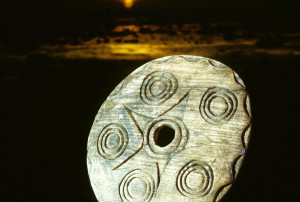 Â Â
  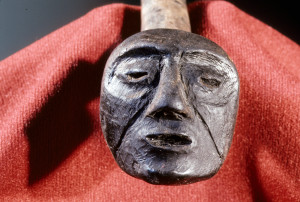 This book is an inspiration, just like ‘Doc’ Daugherty and his crew inspired us all at the Ozette Village site. We will never understand our future until we better understand the past and Ozette helps us do just that.
This book is an inspiration, just like ‘Doc’ Daugherty and his crew inspired us all at the Ozette Village site. We will never understand our future until we better understand the past and Ozette helps us do just that.
– Ralph Munro, Washington Secretary of State 1980-2001
Ozette: Excavating a Makah Whaling Village will be highly popular among both professionals in anthropology and members of the interested public. This truly is one of her best writings and a synthesis as only Ruth Kirk could write. – Dale R. Croes, Ph.D., Washington State University and Director of the Pacific Northwest Archaeological Society
Google this title and obtain a copy through internet services. Great to see this general synthesis of a major wet site undertaking.
WETLAND SESSION TITLE: Multiproxy Wetland and Lakeside Archaeology: From Constructed Niches to the Anthropocene
Organiser(s): Tony Brown (University of Southampton / UK), Naoto Yamamoto (Nagoya University / Japan) and Hidetaka Bessho (Higashiosaka City Cultural Foundation / Japan)
Type: Symposium
Contact: Tony.Brown@soton.ac.uk
Website link: http://wac8.org/academic-program/accepted-sessions-2/ast10/#t10l
Deadline for paper submission; end of February 2016
Abstract: Archaeological sites in wetlands and lake environments have revealed remarkable aspects of the human past that are out of reach of typical dry-land archaeology. The increasing sophistication of palaeoecological methods from biomarkers to aDNA is also producing remarkable data on human activities from lakes and wetland sites. These environmental archives can also record in unparalleled detail the slow and non-linear transition from human co-habited niches to the ecological dominance that characterises the Anthropocene. Whilst the excavation of wetland sites started in NW Europe, especially on the famous lake villages of Switzerland, it has now expanded worldwide to southern Europe, North America, and even Africa. One of the geographical areas of greatest potential is SE Asia including Japan, where excavations of Jomon sites have revealed both remarkable, but also important, details of past human lives and their relationship to changing environmental conditions. Because of the exceptional importance of environmental data to wetland archaeology its study has always been closely related to palaeoecology and this session will exploit this Ecology-Archaeology synergy. In this session, jointly convened by European and Japanese environmental archaeologists we will address how studies of wetland sites (wetlands and lakes) can contribute to studies of Holocene hunter gatherer lifestyles including plant and animal husbandry, to the history of agriculture worldwide and the relative importance of environmental change at a variety of scales from the short-lived and local ‘events’ to global trends.
Dear Committee. I hope this session will bring together European, American and Japanese archaeologists all interested in the use of palaeoecological and environmental data from wet sites. We aim to go far beyond traditional notions of palaeodiet and life-ways through nutritional analyses, aDNA and modelling.
Keywords: wetlands, lakes, Jomon, palaeodiet, nutrition
We are celebrating our 30th Anniversary of WARP in 2016 with a celebratory meeting and conference June 28-July 2, 2016 at the University of Bradford in England. The meeting will include plenary talks from founding members, invited guest speakers, and an open call for papers followed by two days of excursions to the beautiful Lake District regions. Please put this on your calendar and start planning for our next international gathering to celebrate our 30 year past, current developments and planning our WARP future projects and events. The host chair is Professor Francesco Menotti, who recently helped produce two Oxford University Press milestone wetland and wet site volumes: Wetland Archaeology and Beyond: Theory and Practice (2012), and, edited with Adian O’Sullivan, The Oxford Handbook of Wetland Archaeology (2013) (who both are European Coordinators for NewsWARP).  To follow all developments and plan your participation please go to the WARP30th web site at:  http://warp30.org/ ; you will find information about the developing schedule, registration, Bradford University, England, and planned events. We all look forward to this important consideration of wetland and wet site archaeology directions, new developments and planning our world-wide future together. Please help us get out the word to all archaeologists and other interested colleagues and the public. Follow NewsWARP for WARP30 News!   